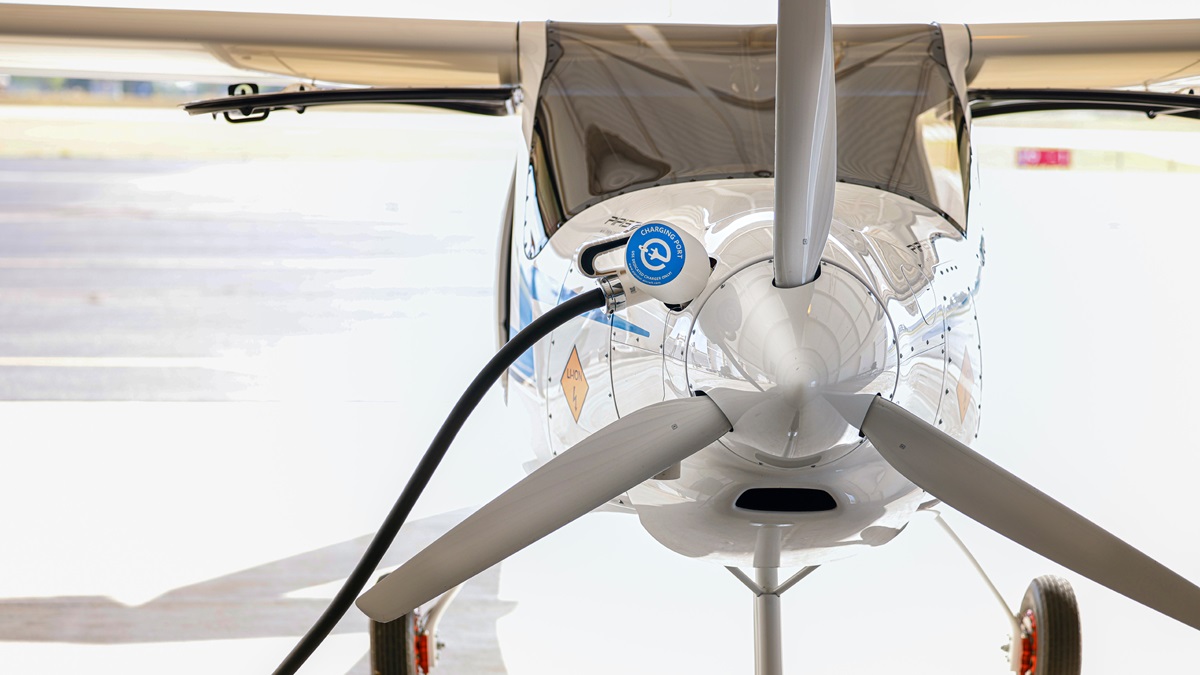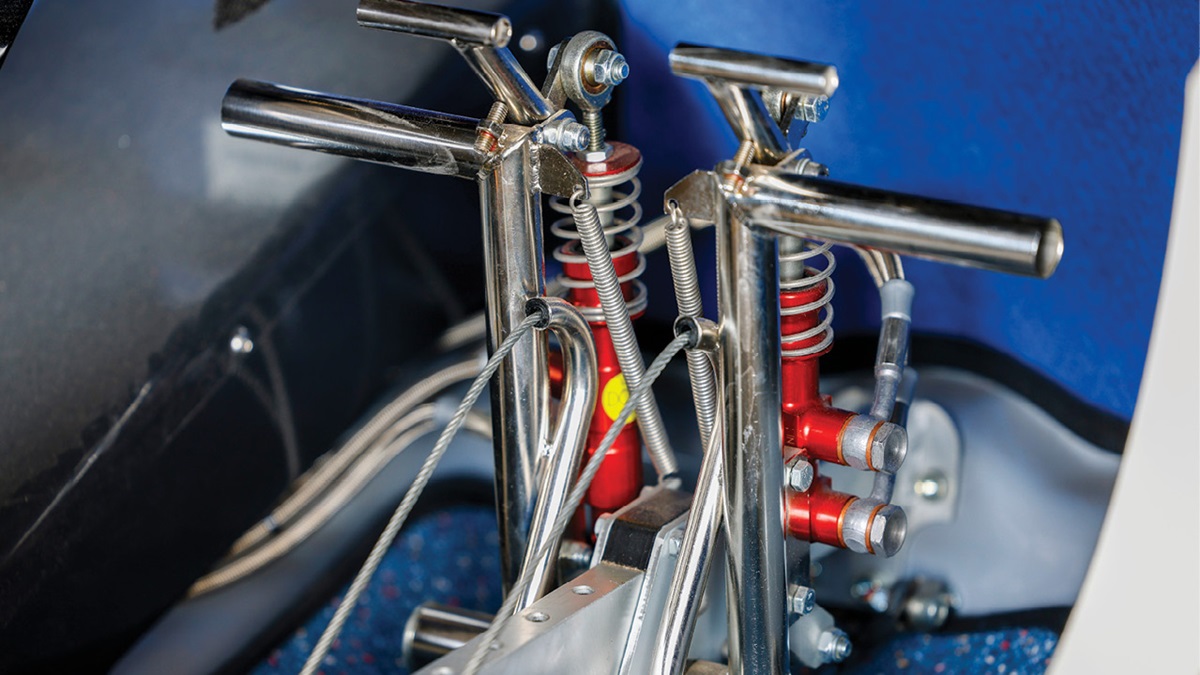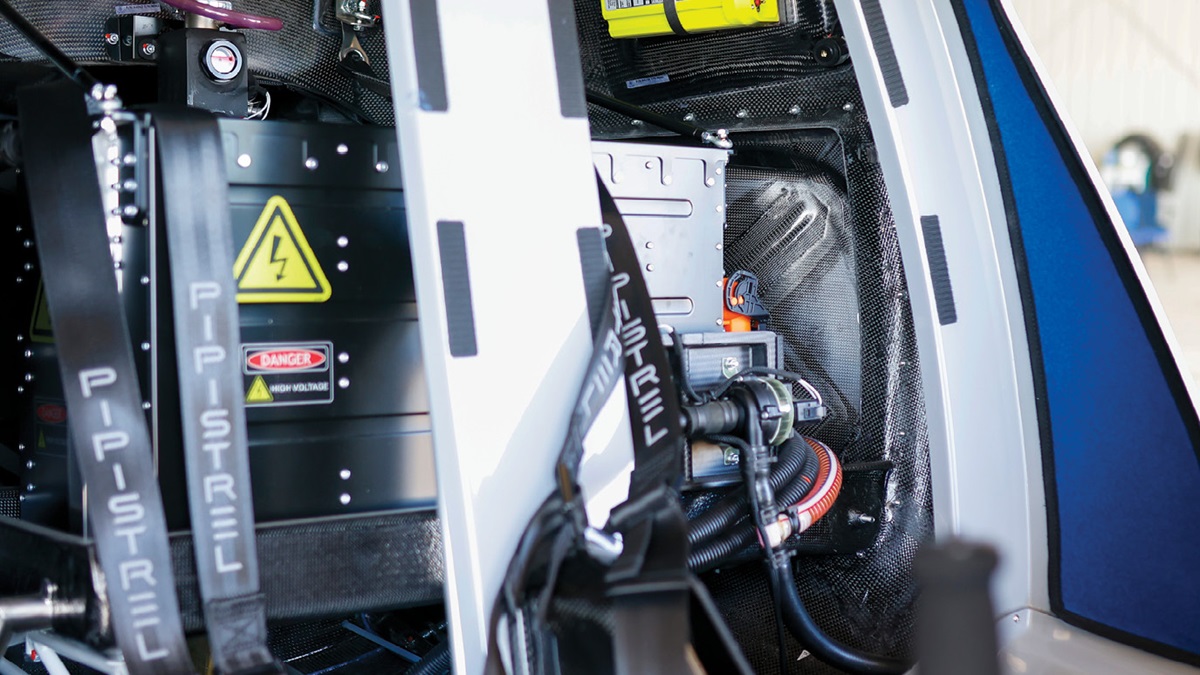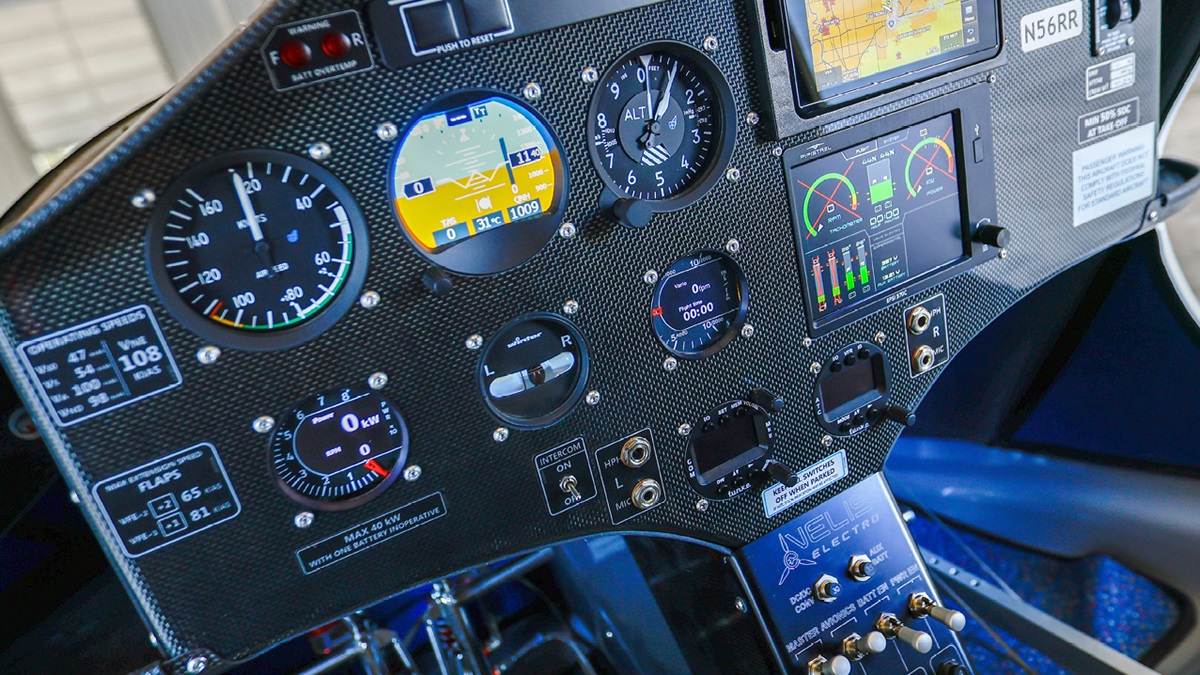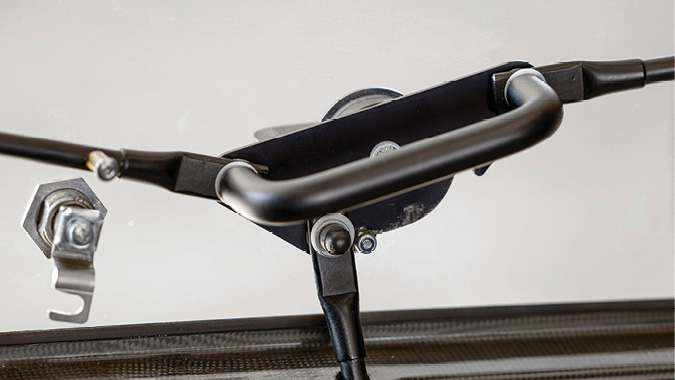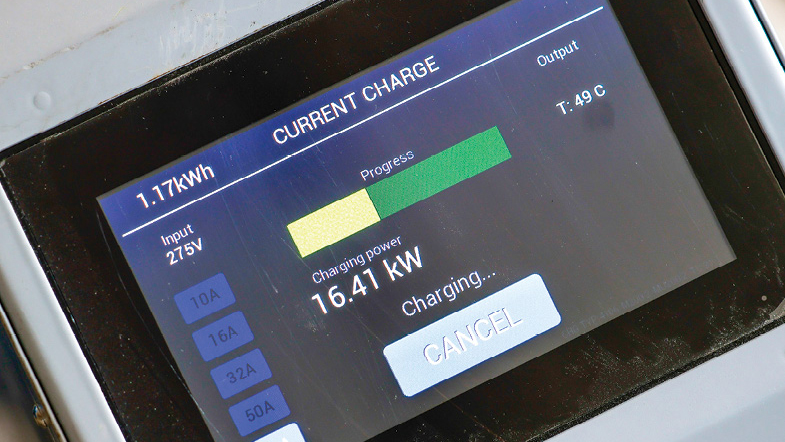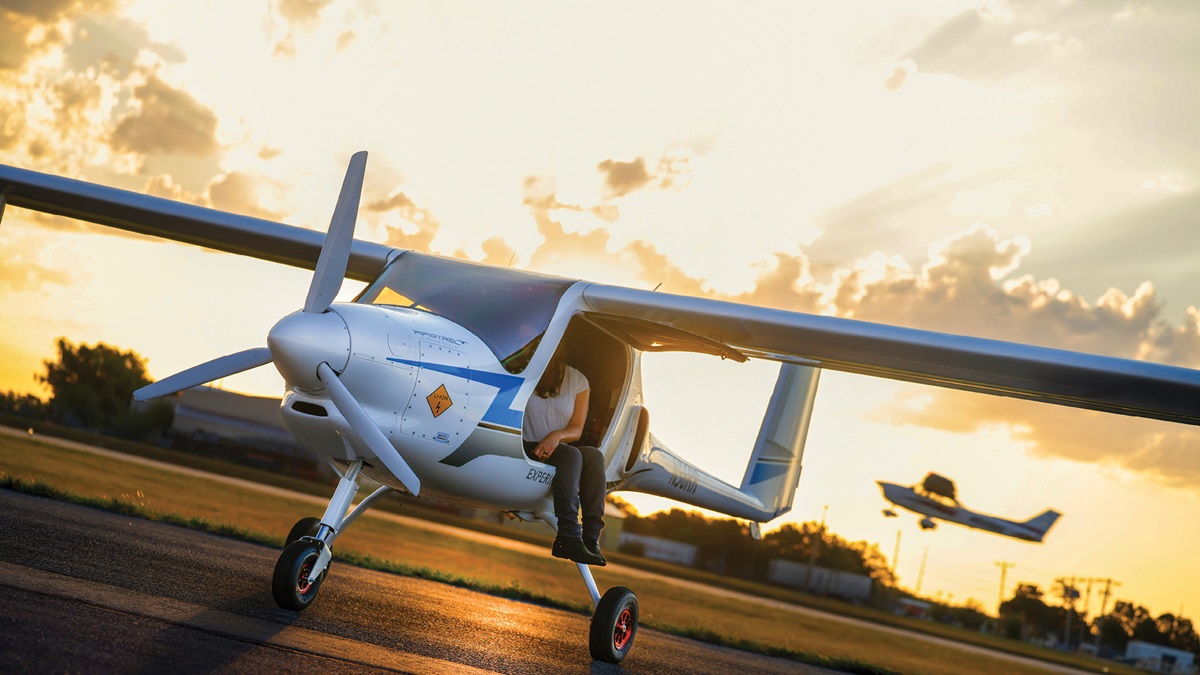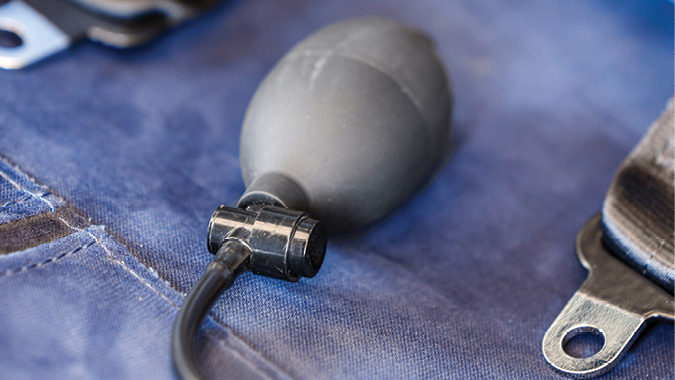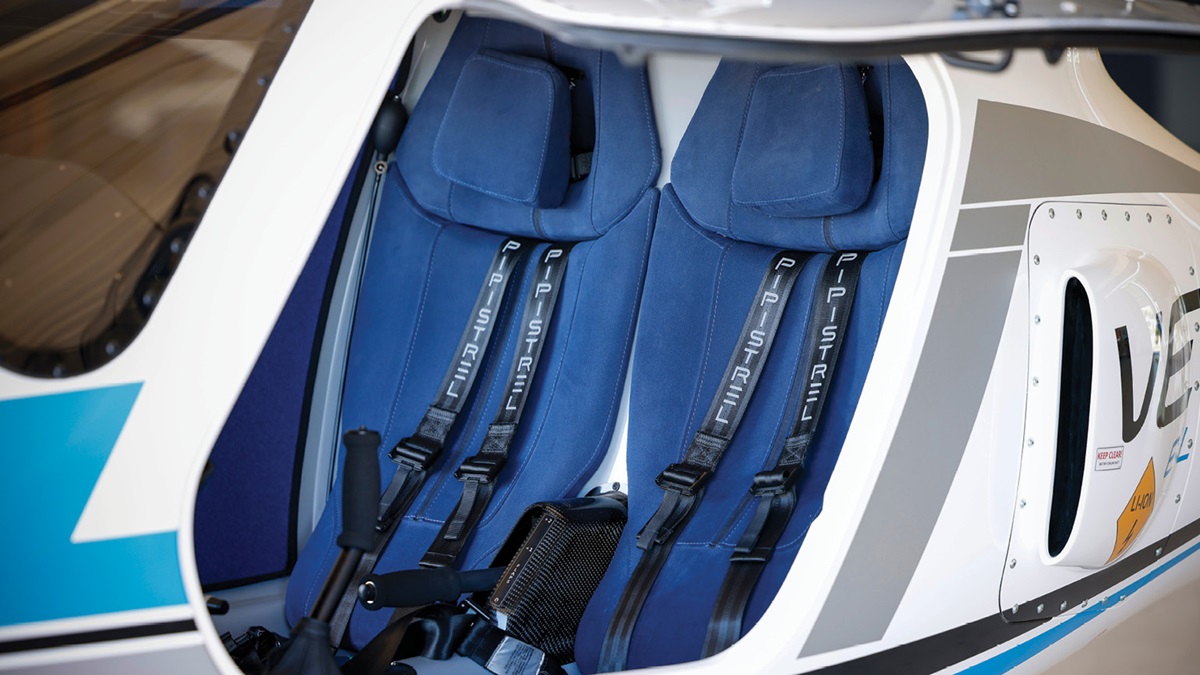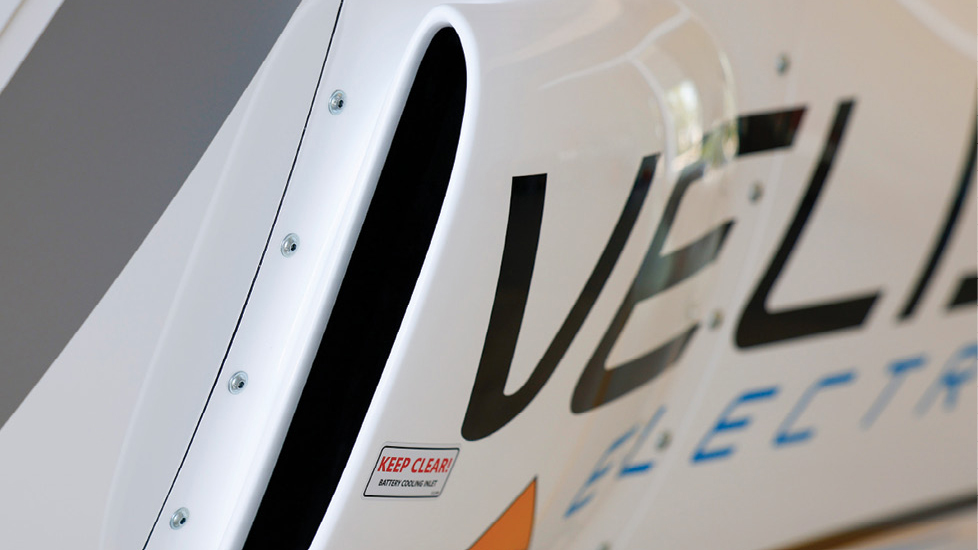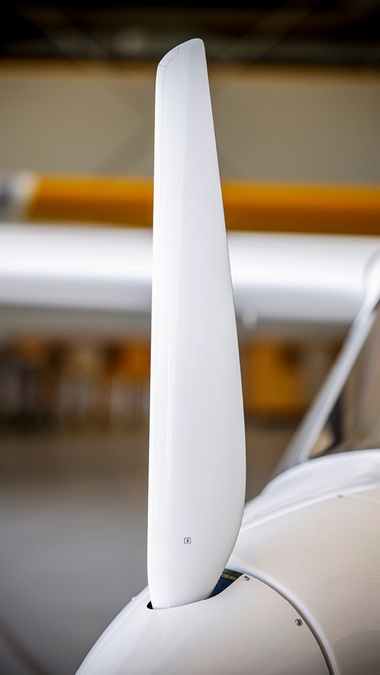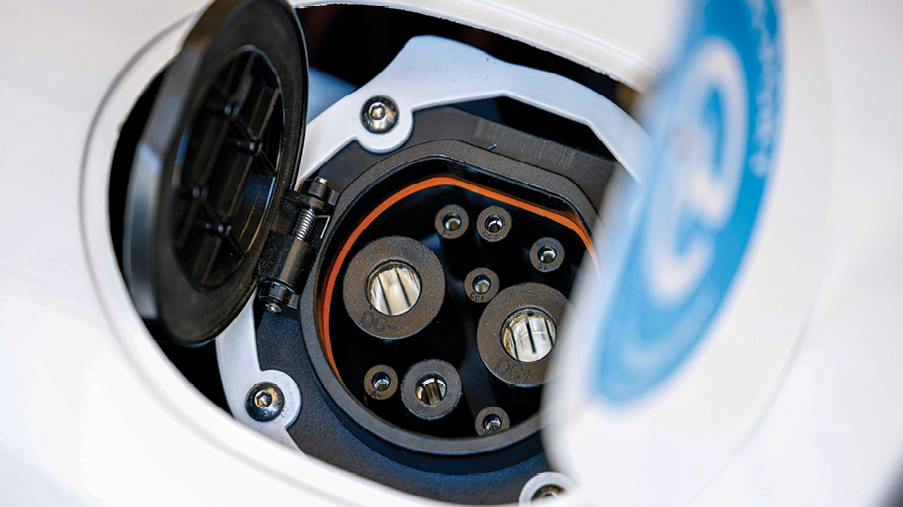Plug and play
Can this little trainer bridge the gap from marvel to mainstream?
One of these things is not like the others. A light sport aircraft with a glider-thin T-tail and high-voltage symbols on the side, the Pipistrel Velis Electro stands out against a backdrop of Cessnas on the Textron Aviation Employees’ Flying Club ramp at Beech Factory Airport (BEC).
This is Wichita, after all: the land of Clyde Cessna and Walter Beech, the center of the general aviation universe when piston aircraft production was at its height. So, what’s this Slovenian electric trainer doing here?
Join the club
Pipistrel began as a powered hang glider manufacturer in 1989 and branched out into composite-construction airplanes and motorgliders in the 1990s and early 2000s. In 2007, the company announced the Taurus Electro electric motorglider, and its innovations in electric aircraft continued: Pipistrel won NASA’s Green Flight Challenge for the Taurus G4 twin-fuselage electric aircraft in 2011 and started production of the Alpha Electro, predecessor to the Velis Electro, in 2016. Pipistrel certified the Velis Electro under European light sport rules in 2020, making it the first certified electric aircraft in the world.
When Textron Inc. bought Pipistrel in 2022, the American industrial conglomerate gained Pipistrel’s line of single-engine airplanes and motorgliders as well as an R&D division tackling the challenges of electric vertical takeoff and landing aircraft and other advanced air mobility technologies. Pipistrel’s fixed-wing products and Nuuva V300 hybrid-electric VTOL cargo drone came together under the umbrella of Textron eAviation, alongside the Nexus eVTOL that Textron subsidiary Bell had been developing. While Pipistrel maintains its development and manufacturing facilities in Slovenia and Italy, Textron eAviation headquarters are in Wichita. A single Pipistrel airplane—the Velis Electro pictured on these pages—came to Beech Factory Airport from a Florida distributor.
The Velis Electro exists somewhere between the legacy airframes of Cessna and Beechcraft and the futuristic Nuuva and Nexus advanced air mobility designs. In a field of eVTOL manufacturers promising Jetsons-style transportation, Pipistrel delivers Textron something no one else has: a real-life, bona fide, certified electric aircraft logging flight hours around the world. It’s a proving ground for foundational eVTOL technologies—but it also demonstrates the distance battery technology has to go to achieve the utility of an avgas-burning airplane.
Textron eAviation officials tout the Velis Electro as a cost-effective trainer for pattern work and local maneuvers, paired with a conventional gas-powered airplane for cross-country work. For that purpose, it’s a fun little airplane. Just don’t plan on going far.
Power up
Preflight for the Velis Electro trades fuel sumps and oil dipsticks for battery and coolant checks. The powertrain, which was all developed and certified by Pipistrel, comprises an electric motor, batteries, and an inverter, and the whole system is liquid cooled. The E-811 motor produces 57.6 kW maximum takeoff power, equivalent to about 77 horsepower. Two 150-pound battery packs are housed in the nose and behind the seats, each with its own cooling system. Check coolant levels in a sight gauge and verify no air bubbles are in the lines; feeling thermal patches confirms there are no signs of a thermal runaway. Turn on the master switch and you’ll hear the coolant pump, along with four pulses of the haptic stall warning.
Startup is anticlimactic, without the suspense of a cranking starter. Flip four toggle switches and the propeller is hot; a nudge of the throttle lever dials up the rpm like a dimmer switch. Pull back to idle and the propeller stops.
A digital engine instrument displays the batteries’ state of health as 99 percent, and at full charge, we’re ready to go. (Takeoff is prohibited at less than 50 percent charge.) The Velis Electro has a battery endurance of up to 50 minutes plus reserves, so this flight will be typical of a Velis Electro training flight: three landings, a few maneuvers, and back to the field, planning for 30 percent state of charge at landing.
Taking off from Runway 1, the Velis Electro leaps off the ground with light back-pressure at 50 knots and starts the climb close to 1,000 fpm at full power. Demo pilot Kirby Ortega advises me to pull the power back to the top of the green, 48 kilowatts, and we fly downwind at 30 kilowatts and 90 knots. First notch of flaperons at 81 knots, and we turn final and extend the second notch at 65 KIAS. Approach speed is 60 KIAS.
“GUMPS, forget it,” says Ortega. “GUMPS doesn’t exist.”
The Velis Electro is light on the controls, with plenty of elevator authority in the flare and rudder inputs more about pressure than travel. Its glider heritage is evident in a 15:1 glide ratio and some float over the runway before we perform a touch-and-go and make another lap around the pattern. The battery remaining goes from 21 minutes to 42 as the throttle moves from climb power to pulled back for downwind. On the third time around, we round the base-to-final turn high, so I pull the power to idle and slip. A windmilling propeller regenerates energy, showing about minus-2 kilowatts on the power indicator.
In stalls with and without flaps, the Velis Electro gives haptic feedback to the sticks and mushes tamely, with no dramatic drop of the nose. Controls are responsive in steep turns, and the massive polycarbonate windows give an expansive view of the Kansas countryside. Flying the airplane is intuitive, with little to monitor inside the cockpit except the state of charge.
It’s time to head back to the airport, but there’s no hurry. The Velis Electro’s Rotax-powered counterpart, the Alpha Trainer, has a VNE of 135 knots, but Pipistrel only certified the Velis Electro to a VNE of 108 knots—why go faster if it would only drain the battery more?
Textron eAviation says students can practice landings and maneuvers in the Velis Electro and switch to a gas-powered model like the Alpha Trainer for cross-country training. The company doesn’t publish a range, only endurance, and you can only carry what fits in a glove box.
“If you’re going overnight someplace, this is what you’re going to wear in the morning,” Ortega says, pinching his shirt.
The 30-percent battery alert sounds on the base leg to Runway 19. By the time we taxi back and shut down, it’s at 27 percent. The cockpit display reflects a Hobbs time of 29 minutes.
The U.S. market
How long will it be before you see a Velis Electro at a flight school near you? Although Textron eAviation is building a Pipistrel distribution network in the United States, electric aircraft can’t be approved here under current light sport aircraft rules. The Velis Electro can only fly in the States as an experimental aircraft, which means flight schools can’t use it for flight training.
The company has petitioned the FAA for exemption, and the proposed Modernization of Special Airworthiness Certification (MOSAIC) could remove powerplant and other restrictions for LSAs as early as next year. Once those regulatory barriers are removed, Textron eAviation faces the challenge of convincing flight training operators the Velis Electro is worth the investment. Low operating costs are appealing, but can a school get enough use out of the airplane to realize the benefit? The Velis Electro takes about an hour to charge on a three-phase charger, and charging times vary by charging infrastructure. Students can’t just gas up and go as they would in a piston aircraft, and they’ll need to switch airplanes for their cross-country training. And, since battery endurance degrades over time, batteries must be replaced at 500 hours. Ultimately, operating costs for the Alpha Trainer and Velis Electro are similar: about 40 Euros per hour including fuel, parts, and labor for a flight school flying 500 hours per year, over 2,000 hours, according to Textron eAviation.
Textron eAviation Director of External Affairs Antonio LaCorte said up to 80 percent of training can be done in the Velis Electro, and he expects acceptance to grow as battery technology evolves to provide greater endurance. He said the Alpha Trainer is an ideal complement to the Velis Electro, but a flight training provider with conventional piston aircraft like 172s also might use the Velis Electro to add a sustainable option to the fleet. That could be a savvy PR move, but noise and sustainability pressures aren’t as great in the United States as they are in Europe. And the prevalence of electric vehicles on the roads has improved public acceptance of electric power, but range anxiety remains.
Pipistrel has delivered more than 85 Velis Electros around the world since 2020, and its Pipistrel Vertical Solutions R&D division continues to press forward on the certification of the piston-powered Panthera, hybrid-electric development, and more, including flights of a hydrogen-electric HY4 demonstrator based on the Taurus G4. Back in Wichita, development continues on the Nexus eVTOL.
“We’re looking at a family of systems, an entire ecosystem that goes with our product line, and I think that’s a differentiator between us and others in this field,” said LaCorte. “We go from light sport trainer to a fully distributed electric VTOL air taxi.”
Major aerospace manufacturers have poured billions of dollars into advanced air mobility projects in recent years. Advancements in sustainability, noise reduction, and autonomy have potential applications across a range of industries facing similar technological, regulatory, and market challenges. Just as Pipistrel’s innovation in conventional fixed-wing airplanes can inform the development of electric air taxis and cargo drones, eVTOL projects may pass down technologies to the general aviation world.
The Velis Electro is a groundbreaking airplane. An endurance of even an hour and a half could transform it from a technological marvel to a more practical training option. A hybrid powerplant on an airframe with a greater payload, like the Panthera, could push electric propulsion even further into the mainstream. It may be years before electric-powered people-movers whiz across the sky, but pieces of that technology are here today.

